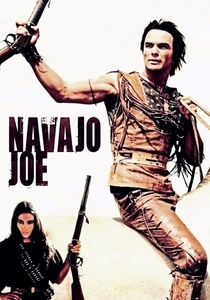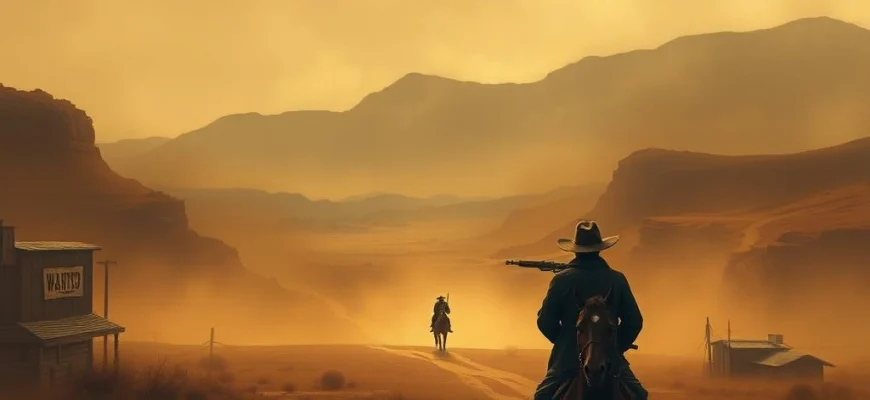If you loved the gritty revenge tale and stylish action of Death Rides a Horse (1967), you're in for a treat. This article explores 10 similar movies and shows that capture the same intense atmosphere, morally complex characters, and thrilling shootouts. Whether you're a fan of spaghetti westerns or just crave more vengeance-driven stories, these picks will satisfy your appetite for justice—frontier-style.

A Fistful of Dollars (1964)
Description: A raw and violent story of a lone gunslinger navigating a town torn apart by rival factions. The film's minimalist dialogue and focus on action and revenge are key elements of its appeal.
Fact: This film is a loose remake of Akira Kurosawa's 'Yojimbo.' It was the first spaghetti western to achieve major international success.
 Watch Now
Watch Now 
For a Few Dollars More (1965)
Description: A gritty tale of bounty hunters and outlaws, filled with tension, betrayal, and violent confrontations. The film's stark visuals and morally gray characters are hallmarks of the spaghetti western genre.
Fact: This was the second film in the 'Dollars Trilogy' and helped solidify the spaghetti western as a popular genre. The musical pocket watch used in the film became an iconic prop.
 Watch Now
Watch Now 
The Good, the Bad and the Ugly (1966)
Description: A quintessential spaghetti western with a focus on morally ambiguous characters, intense standoffs, and a gritty, desolate landscape. The film's themes of revenge, greed, and survival align closely with the tone and style of classic westerns.
Fact: The film's iconic score by Ennio Morricone is one of the most recognizable in cinema history. It was the highest-grossing spaghetti western of its time.
 Watch Now
Watch Now 
The Hellbenders (1967)
Description: A dark and violent tale of a Confederate family's quest to rebuild their fortune after the Civil War. The film's themes of greed, betrayal, and survival are common in spaghetti westerns.
Fact: The film was originally titled 'The Cruel Ones' in some markets. It features a haunting score by Ennio Morricone.
 Watch Now
Watch Now 
Django (1966)
Description: A brutal and action-packed western centered on a drifter seeking vengeance. The film's dark tone, explosive violence, and antihero protagonist are characteristic of the genre.
Fact: The film spawned numerous unofficial sequels and inspired Quentin Tarantino's 'Django Unchained.' The protagonist drags a coffin behind him, which becomes a memorable visual motif.
 Watch Now
Watch Now 
Navajo Joe (1966)
Description: A revenge-driven story featuring a Native American protagonist taking on a gang of outlaws. The film's action sequences and focus on retribution align with the themes of classic westerns.
Fact: The film's score was composed by Ennio Morricone under a pseudonym. It was one of the few westerns to feature a Native American as the central hero.
 Watch Now
Watch Now 
Day of Anger (1967)
Description: A coming-of-age story set in the Old West, featuring a young protagonist learning the ways of violence from a seasoned gunfighter. The film's themes of mentorship and revenge are central to its narrative.
Fact: The film's title song became a hit in Italy. It is known for its realistic and gritty depiction of gunfights.
 Watch Now
Watch Now 
The Great Silence (1968)
Description: A bleak and snowy western that subverts traditional genre tropes with its tragic ending and morally complex characters. The film's somber tone and focus on survival in a lawless land make it stand out.
Fact: The film was shot in the snowy Dolomites, a rare setting for a western. It was banned in several countries due to its violent and nihilistic themes.
 Watch Now
Watch Now 
Once Upon a Time in the West (1968)
Description: This epic western features a slow-burning narrative, complex characters, and a strong emphasis on revenge and justice. The cinematography captures the harsh beauty of the frontier, much like other films in the genre.
Fact: The film was initially a box office failure but later gained a cult following and is now considered a masterpiece. It features one of the longest opening sequences in film history.
 Watch Now
Watch Now 
Sabata (1969)
Description: A stylish and action-packed western with a mysterious gunslinger at its center. The film's blend of humor, violence, and inventive weaponry sets it apart while staying true to genre conventions.
Fact: The character of Sabata uses a variety of unconventional weapons, including a rifle hidden in a cane. The film was part of a trilogy, though the sequels featured different actors in the title role.
 Watch Now
Watch Now 








